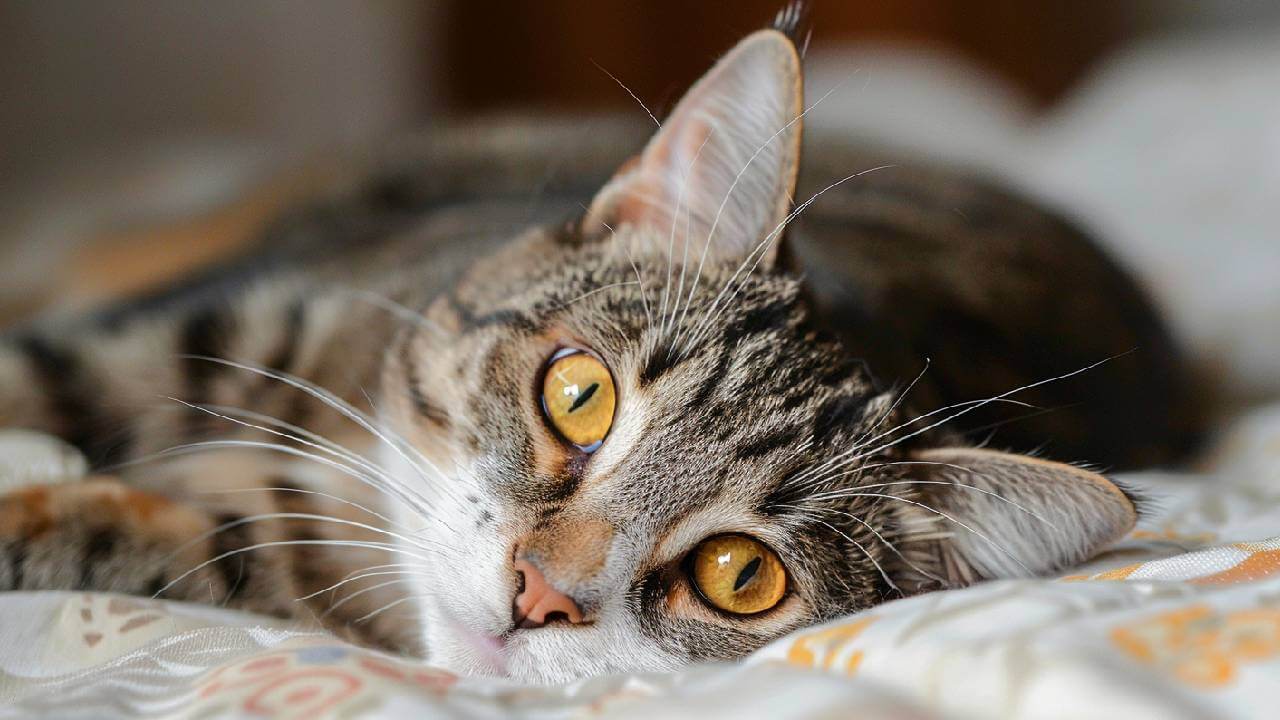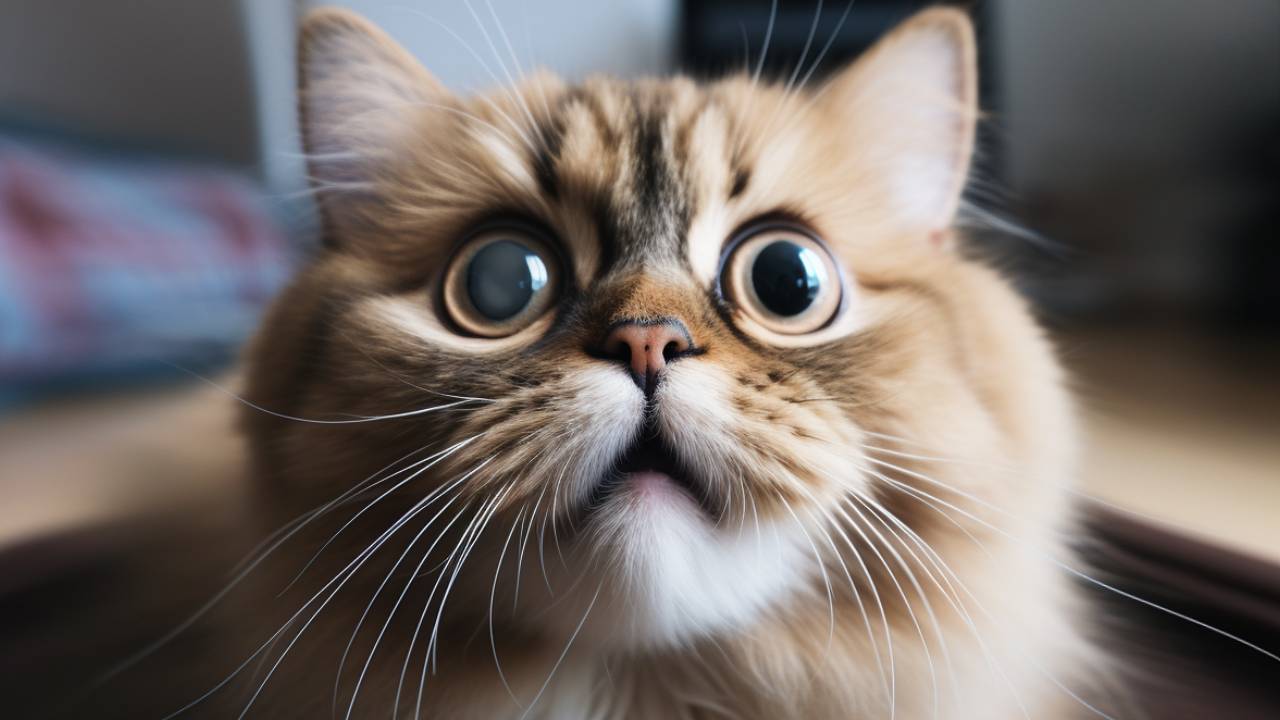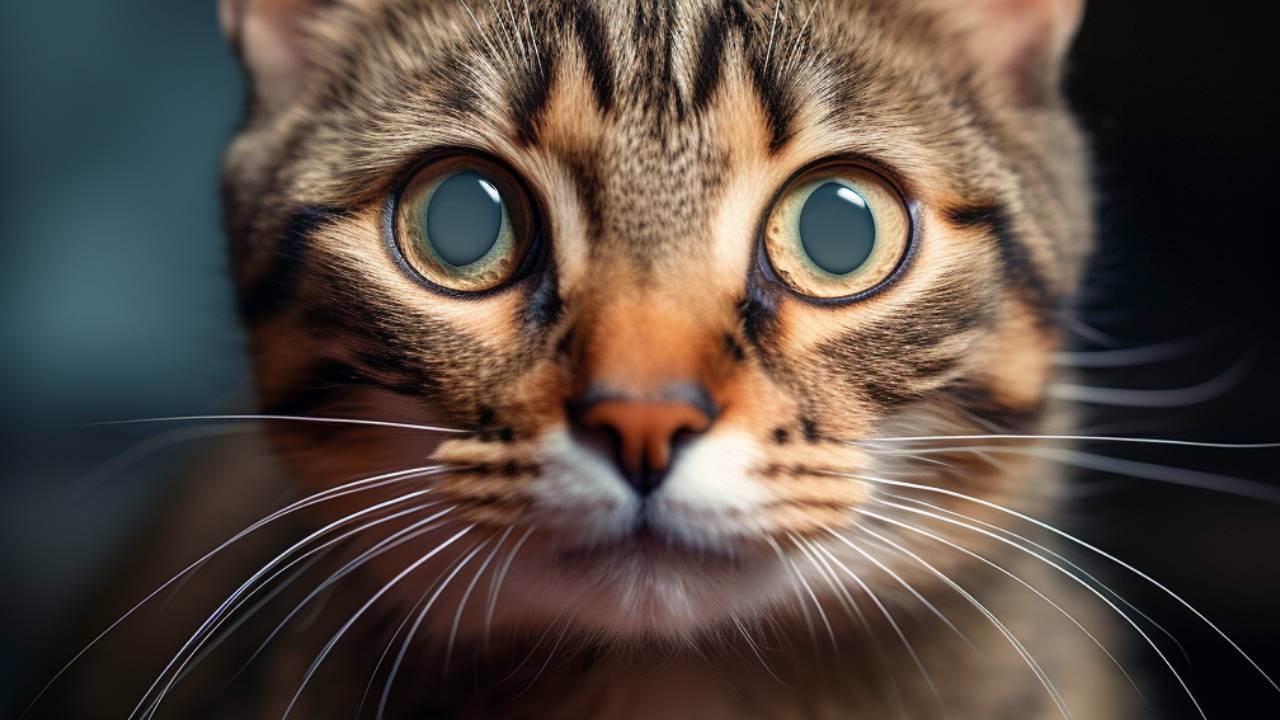Cataracts are a concerning eye condition that can affect our beloved feline companions. Feline cataracts are a complex and visually impairing condition that affects the eye’s lens. Just like in humans, cataracts in cats can lead to impaired vision or even blindness if left untreated.
Let’s discover what cataracts are, their symptoms, causes, diagnosis, treatment options, and tips for providing a comfortable life for your cat with cataracts.
What Is Cataract in Cats?
This lens is ordinarily transparent, focusing light onto the retina at the back of the eye. In a healthy eye, it is crystal clear, allowing light to pass through and creating a sharp image. However, when a cataract develops, the lens becomes cloudy or opaque, obstructing the passage of light and distorting vision. Cataracts can vary in size and severity, ranging from small, inconspicuous clouding to significant opacities that obscure the lens entirely.
“The extent of the cataract determines the impact on a cat’s vision, from mild blurriness to complete blindness. For more advanced diagnostic ask your vet for referral to the ophtalmolgy specialist.” – Veterinarian Mykhailo Ozmenchuk.
This condition can occur in one or both eyes and while it can affect cats of all ages, it is more commonly observed in older felines. As cataracts progress, they compromise the cat’s ability to see clearly, ultimately affecting its quality of life.
Symptoms of Cataracts in Cats
Cataracts in cats manifest through various noticeable symptoms, which can vary in intensity depending on the size and progression of the cataract. If you suspect your cat may have cataracts, here are some common signs to watch out for:
1. Cloudy or Opaque Eyes: The most noticeable symptom is a change in the appearance of your cat’s eyes. It might be cataracts if they seem less clear, more like looking through a foggy window.
Tip: In a well-lit room, look into your cat’s eyes. A healthy eye will have clarity, while a cataract-affected eye may look milky or cloudy.
2. Changes in Behavior: Cats with cataracts often exhibit changes in behavior. They may become more cautious or reluctant to engage in activities that require precise vision, such as jumping onto high surfaces or playing with small toys.

Fact: Cats rely heavily on their keen sense of sight for exploration and play. A change in these habits can signal they’re not seeing as well as they used to.
3. Bumping into Objects: Impaired vision can cause cats to bump into objects or walls as they struggle to navigate their surroundings accurately. Keep your home layout consistent to help your cat navigate familiar paths easily.
4. Squinting or Light Sensitivity: Finding your cat seeking shadowy spots more than usual could be a sign of discomfort due to light sensitivity, a common cataract companion. Cats’ eyes can usually adjust to different light levels quickly, so the difficulty with bright lights is noteworthy.
5. Dilated Pupils: Dilated pupils in cats with cataracts can result from the reduced light entering the eye due to the clouded lens. This dilation captures as much available light as possible, compensating for their compromised vision.
Tip: A quick flashlight test (briefly shining a light into the eyes) can show if pupils contract correctly. If not, a vet visit is in order.
6. Vision Problems: As cataracts progress, cats may experience various vision problems, such as difficulty tracking moving objects or discerning details in their environment. Cats are usually exact and graceful creatures. A sudden onset of clumsiness or disinterest in visual games might hint at a deeper issue.
Monitoring your cat’s behavior for signs of vision impairment is essential. Using cat cameras can help you keep an eye on their activities and navigate their environment, even when you’re not home.

Causes of Cataracts in Cats
Cataracts in cats can arise from various factors, including:
- Genetics: Some cat breeds are genetically predisposed to cataracts, making them more susceptible to developing this eye condition.
- Underlying Health Issues: Cataracts can occur as a secondary condition due to other health problems, such as diabetes mellitus. Managing these underlying issues is crucial to prevent or slow down cataract progression.
- Aging: As cats age, the risk of cataract development increases, with senior cats being more prone to age-related cataracts.
- Trauma or Injury: Eye injuries or trauma can lead to the formation of cataracts in cats, particularly if the lens is damaged during the incident.
- Nutritional Deficiencies: Poor nutrition and imbalances in a cat’s diet may contribute to cataract formation, emphasizing the importance of a well-balanced diet.
- Inflammation or Infection: Eye infections or chronic inflammation within the eye can contribute to cataract development over time.
Diagnosis of Cataracts in Cats
Accurately diagnosing cataracts in cats is crucial for determining the appropriate treatment plan. Veterinary professionals employ a combination of methods and examinations to confirm the presence and severity of cataracts. Here’s an overview of the diagnostic process:
1. Physical and Slit Lamp Examination: The journey begins with a comprehensive physical check-up focusing on the eyes to spot cataract signs. Following this, a slit lamp examination allows the vet to inspect the lens meticulously. This magnified view is key to identifying the extent of cataract formation, even in its early stages.
2. Eye Tests and Retinal Examination: Assessing Vision and Eye Health: A series of eye tests evaluates how cataracts affect your cat’s vision, involving reactions to light and tracking capabilities. Additionally, a retinal examination is crucial for checking the retina’s health at the eye’s back, as cataracts can impact treatment options.
3. Ultrasound: In situations where the cataract obscures a clear view of the eye’s internal structures or is in its nascent stages, an ultrasound may be conducted. This detailed assessment ensures no aspect of the cataract’s impact is overlooked, paving the way for a tailored treatment plan.
The combination of these diagnostic methods allows veterinarians to confirm the presence of cataracts, determine their severity, and identify potential complications. Consider introducing cat tunnels to stimulate their senses without requiring precise vision, ensuring they continue to enjoy playtime.
With a precise diagnosis, the veterinarian can discuss treatment options and strategies to manage the condition effectively and enhance your cat’s quality of life.

Treatment Options for Cataracts in Cats
When it comes to addressing cataracts in cats, the choice of treatment depends on several factors, including the cataract’s severity and your cat’s overall health and age. Veterinarians carefully assess these variables to determine the most appropriate course of action. Here are the primary treatment options:
- Cataract Surgery: In many cases, cataract surgery is the most effective option for restoring a cat’s vision. During this procedure, the clouded lens is surgically removed and replaced with an artificial intraocular lens (IOL) or a contact lens. The success of the surgery largely depends on factors such as the cataract stage and the cat’s general health.
- Medical Management: Medical management is an alternative for cats with early-stage cataracts or those who may not be suitable candidates for surgery due to underlying health issues. This approach involves using prescription eye drops or medications to reduce inflammation and manage symptoms.
- Lifestyle and Environmental Adjustments: Regardless of the chosen treatment path, adjusting your cat’s environment is crucial. Ensure their living space is safe and obstacle-free, with consistent pathways to help them navigate confidently.
Considering the potential costs of surgery and ongoing care, securing cat insurance can provide financial peace of mind as you explore the best treatment options for your cat’s cataracts. Regular veterinary check-ups, prompt treatment, and a supportive home environment are vital in managing cataracts and ensuring your cat’s well-being.

FAQs
Are certain breeds more prone to cataracts?
While all cats can develop cataracts, certain breeds may have a higher predisposition due to genetic factors. These breeds include Persians, Himalayans, and Siamese cats.
Can cataracts in cats be prevented or slowed down?
No specific diet or supplement is proven to prevent or slow the progression of cataracts. Regular veterinary check-ups, early detection, and appropriate management of underlying conditions like diabetes can help minimize the risk of cataracts and preserve your cat’s vision.
How are cataracts diagnosed in cats?
Cataracts in cats are diagnosed by a veterinarian, which may include visual assessment, pupil dilation, and ocular imaging techniques. Treatment options for cataracts in cats depend on factors such as the severity of the cataracts and the cat’s overall health. Surgical removal of cataracts is often considered the most effective treatment to restore vision.
Are cataracts in cats painful?
Cataracts are not typically painful, but underlying conditions or complications associated with cataracts, such as inflammation or increased intraocular pressure, may cause discomfort.
Can cataracts in cats lead to blindness, and is there any hope for restoring vision?
Untreated cataracts can progress and eventually lead to blindness in cats. However, timely intervention through cataract surgery can often restore vision and improve your cat’s quality of life. It’s essential to consult with a veterinary ophthalmologist to discuss the best course of action for your cat’s specific situation.
In crafting our comprehensive guide on feline cataracts, we’ve consulted various respected sources within the veterinary and ophthalmology fields. This ensures our diagnosis, treatment, and care advice is grounded in the most current research and expert insights. Among the valuable resources that have informed our content, we recommend the following for those seeking further details:
- Insights from the Veterinary Information Network on the specifics of feline cataracts.
- The Cornell Feline Health Center‘s guidelines on recognizing and managing this condition.
- Research findings from the National Center for Biotechnology Information on the latest treatment methodologies.
- Practical care advice from the Animal Medical Center to support cats with cataracts.
Leveraging these authoritative resources, we aim to equip you with reliable and up-to-date information, helping you confidently navigate the challenges of cataracts in cats.






0 Comments